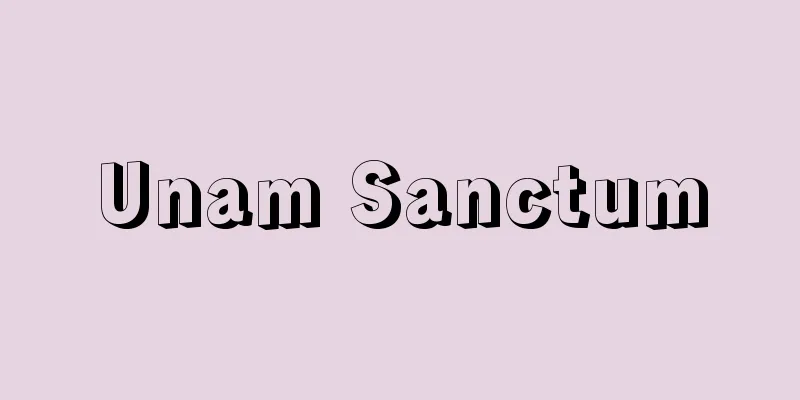Dainihon Butokukai - Dainihon Butokukai

|
On April 17, 1895 (Meiji 28), as part of the commemorative projects for the 1100th anniversary of Emperor Kanmu's enthronement in Kyoto, this private organization was established with the aim of preserving and promoting Japan's unique martial arts, cultivating martial virtue, and contributing to the improvement of the morale of the people. Its headquarters were located within the grounds of Heian Shrine in Kyoto, and Prince Komatsunomiya Akihito was selected as president. Its first chairman was Kyoto Governor Watanabe Chiaki, and its vice-chairman was Heian Shrine's chief priest Mibu Motonaga. It also established branches in each prefecture across the country, with the governors appointed as branch chiefs. Its immediate projects were to build a Butokuden (a hall for fighting) within the grounds of the shrine, and to hold a Butoku Festival and a large martial arts demonstration in Kyoto every year. The Butoku Festival and Grand Demonstration were originally held from October 25th, but in 1899, when the Butokuden Hall was completed, it was decided to follow the example of the Enryaku period and to start the festival on May 4th in the Gregorian calendar. In 1901 (Meiji 34), a Summer Young People's Grand Demonstration was held, and each branch gradually began holding its own tournaments. The following year, 1902, the "Examples of Preferential Treatment for Martial Artists" were established to recognize outstanding martial artists, and it was decided to award the titles of Hanshi and Kyoshi, and then in 1905, the Martial Arts Teacher Training Institute was established with the aim of training martial arts teachers for secondary schools. On June 3, 1909, it was approved as a foundation and became the organization that governed martial arts in both name and reality. In 1919, the training center was promoted to a martial arts college based on the Professional School Act, and in 1920 (Taisho 8), it was renamed Martial Arts College. In this way, the association played a major role in the spread and development of martial arts, such as training excellent martial arts instructors, establishing a title and rank system and match refereeing methods, and standardizing the forms of sword and judo, but with the transition to a wartime system following the outbreak of World War II, it was reorganized as an external government organization under the joint jurisdiction of the five ministries of Health and Welfare, Education, Army, Navy, and Home Affairs on March 21, 1942. At the same time, the so-called "combat art of martial arts" was promoted, with the addition of jukendo, shooting do, and other disciplines. After the war, the organization attempted to reorganize itself as a purely private organization, but failed, and it voluntarily dissolved on October 31, 1946. However, this dissolution was not approved by GHQ, and on November 9, it was ordered dissolved by Ministry of the Interior ordinance, all assets were confiscated, and on August 2, 1947, it was designated as an organization that fell under criterion G of the Public Offices Removal Order, and those involved were removed from public office. This marked the complete end of the organization's 50-year history as a governing martial arts organization. [Tamio Nakamura] Source: Shogakukan Encyclopedia Nipponica About Encyclopedia Nipponica Information | Legend |
|
1895年(明治28)4月17日、桓武(かんむ)天皇奠都(てんと)1100年記念事業の一環として、日本固有の武術を保存奨励し、武徳の涵養(かんよう)と国民の士気の振作に寄与することを目的に設立された民間団体。本部を京都・平安神宮境内に置き、総裁に小松宮彰仁(こまつのみやあきひと)親王を推戴(すいたい)し、初代会長に京都府知事渡辺千秋、副会長に平安神宮宮司壬生基脩(みぶもとなが)を選んだ。また、支部は全国の各道府県に置き、知事をその支部長に委嘱した。当面の事業としては、同神宮境内に武徳殿(ぶとくでん)を建立することと、毎年京都で武徳祭および大演武会を開催することとであった。 この武徳祭と大演武会は、当初10月25日から行われたが、1899年に武徳殿が竣工(しゅんこう)したのを機に、延暦(えんりゃく)の故事(こじ)に倣って、新暦に換算した5月4日をもって第1日とすることにした。また、1901年(明治34)には、夏の青年大演武会を開催し、各支部でも順次支部大会を実施することになった。翌02年には、優れた武術家を表彰するための「武術家優遇例」を制定し、範士・教士の称号を授与することとし、ついで05年には、中等学校の武術教員の養成を目ざして、武術教員養成所を設置した。そして1909年6月3日、財団法人とすることを認可され、名実ともに武術を統轄する団体となり、12年には同養成所は専門学校令に基づく武術専門学校へと昇格、19年(大正8)には武道専門学校と改称した。 こうして本会は、優秀な武道教員の養成、称号・段位制や試合審判法の確立、剣・柔道の形の統一など、武道の普及・発展に大きな役割を果たしてきたが、第二次世界大戦の勃発(ぼっぱつ)による戦時体制への移行により、1942年(昭和17)3月21日、厚生・文部・陸軍・海軍・内務の五省共管の下に政府の外郭団体に改組された。それとともに、銃剣道、射撃道などを加えた、いわゆる「武道の戦技化」が推進された。 戦後、純民間団体への改組が図られたが、これに失敗し、1946年(昭和21)10月31日、自主的に解散した。しかし、この解散はGHQの認めるところとならず、11月9日、内務省令による解散を命ぜられ、全財産の没収、さらに翌47年8月2日、公職追放令の基準G項に該当する団体に指定され、関係者の公職追放が行われた。ここに50年に及ぶ武道統轄団体としての歴史は、完全にその幕を閉じることになったのである。 [中村民雄] 出典 小学館 日本大百科全書(ニッポニカ)日本大百科全書(ニッポニカ)について 情報 | 凡例 |
<<: Greater Japan Youth Union - Greater Japan Youth Union
>>: The Complete Book of Buddhist Literature in Japan
Recommend
Arlberg [pass] - Arlberg
A mountain pass on the border between Vorarlberg a...
Sturmabteilung
...Initially a coalition government with conserva...
Legal minerals
These minerals are subject to the Mining Act, and...
taun
...Lychee and longan in southern China, rambutan ...
Shortcut (English)
[Noun] (Suru) 1. To take a shortcut. Also, a short...
Sacral nerves
… While the cranial nerves that enter and exit th...
Aeonium arboreum (English spelling)
… [Hiroshi Yuasa]. … *Some of the terminology tha...
Beishacheng Han Tombs (English: Beishacheng Han Tombs)
A group of ancient tombs from the early Han dynast...
"Foreign Land Chronicles"
...Describes the locations, customs, and products...
English sweat
…Celsus also mentioned dry hot sand, hot steam, s...
Bleeding heart (Dicentra spectabilis; bleeding heart)
A perennial plant of the Papaveraceae family, nati...
Kujapi - Kujapi
...The ensemble, centered on the kulintang, which...
Otorik G.
… [Osamu Ieda]. … *Some of the terminology that m...
Vaccinium
...A deciduous shrub of the Ericaceae family that...
Character - Nickname
〘Name〙①(i) In China, an alias given to a boy at th...

![Ichinomiya [town] - Ichinomiya](/upload/images/67caed0fdb2a0.webp)







![Takahama [town] - Takahama](/upload/images/67cc1e0a867fd.webp)